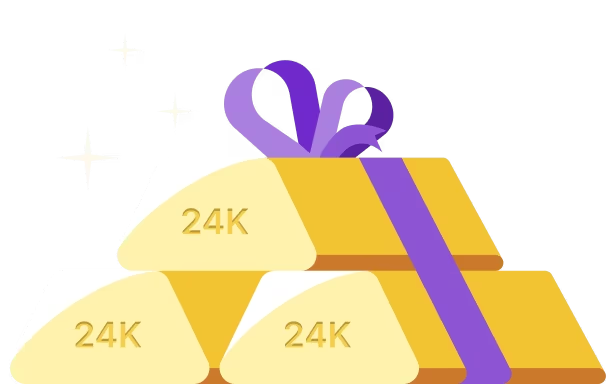Sometimes you don't even realize how much you are losing by simply making a choice. Opportunity cost can be considered as this loss you bear or the benefits you will miss by choosing one option over the other.
What is Opportunity Cost?
By definition, opportunity cost is the measure of the potential benefits an investor or an institution misses out on by choosing one alternative over the other.
Investors often overlook opportunity cost because it cannot be seen clearly on a finance sheet.
The idea is simple; you subtract the benefits of the options you have chosen from the benefits you would have received had you gone with the alternative option.
Considering opportunity costs in your day-to-day life can lead to better investment decisions and effective money management.
How to Calculate Opportunity Cost?
You can use this formula to calculate opportunity costs while making a decision.
Opportunity Cost = FO - CO
Where FO = Return on best-forgone option and CO = Return on the chosen option
You need to subtract the benefits of one option from the other. This will give you the correct picture of how much you are missing out on while choosing one option over the other.
For example, assume that you are a business owner and thinking of putting a certain part of your profit into investing. You can see two options available in front of you.
One option is to invest in equity, where a stock is expected to give 10% returns on investment in a year. And the other option is to invest in a wine distillery whose value will keep increasing over time and can give you 30% returns on investment over the same period.
Now, to calculate the opportunity cost of choosing to invest in equity over wine investment, we will have to calculate the difference between the two.
OC = (30% - 10%)
= 20%
So, you are losing 20% of your money by choosing not to invest in the wine market in this case.
Opportunity costs are not displayed on the finance sheets, as they are the unseen benefits you miss out on. But, investors and institutions often calculate opportunity costs to make better decisions and manage their money wisely.
Types of Opportunity Costs
Economists and finance experts classify opportunity costs as:
(i) Explicit opportunity costs
(ii) Implicit opportunity costs.
Explicit Opportunity Costs
This is the benefit you lose when spending it on one of the two options. This can include wages, rent, stock purchases, utilities, materials etc. This is calculated when you have to choose between spending and not considering income.
Implicit Opportunity Costs
This is the possible extra income that could have been generated, had you gone with the other available option. Implicit opportunity costs are often ignored as they are extremely difficult to identify.
Benefits of Calculating Opportunity Cost
Opportunity costs can be much more beneficial than they seem to be. Business owners and investment institutions consider calculating opportunity costs for every crucial decision that they are making.
It will also make your decision-making process a lot easier, as you will clearly see the more profitable option on paper.
For example, a firm incurs both debt and equity investment expenses after considering the opportunity costs involved in both scenarios. If you plan to invest some of your money to generate more ROI than the interest on your lent money, then going with the first option is better. But this benefit can be overseen while assigning the funds to different categories as they are not visible.
Opportunity costs can be a good way of managing personal finances as well. In your everyday life, too, you can calculate opportunity costs while making small decisions like purchasing groceries online or offline or choosing one product over the other.
Instead of randomly choosing any option, if you carefully calculate the benefits involved in both cases and then decide which option to go with, you can save some money.
While this money might seem like a smaller chunk of savings, it can accumulate over time and become huge. And this habit of making calculative decisions will also help you in the future if you have to make crucial financial decisions.
Difference Between Sunk Money & Opportunity Cost
Sunk money is the amount that you have put into an investment or the money that you have already spent, while opportunity cost considers the loss of potential returns from an alternative investment decision.
A sunk cost is something that has already been paid, like the rent you have already paid for your office space. However, since you haven't yet used the money to purchase office furniture, it would be considered an opportunity cost.
When choosing between two pieces of heavy equipment, one with an expected ROI of 10% and the other with an ROI of 6%, you should weigh the potential forgone returns earned elsewhere as an opportunity cost. But the money you spend on the equipment will be considered a sunk cost or sunk money.
From an accounting standpoint, a sunk cost could also refer to the upfront money that you are putting into a high-priced large piece of equipment, which may be expensive over time but is sunk in the sense that you won't be getting it back.
Final Thoughts
Overall, considering opportunity costs, even in small monetary transactions in your daily life, can help you save more money and help you make better financial decisions over time. Effective money management is made possible by calculating opportunity costs.










